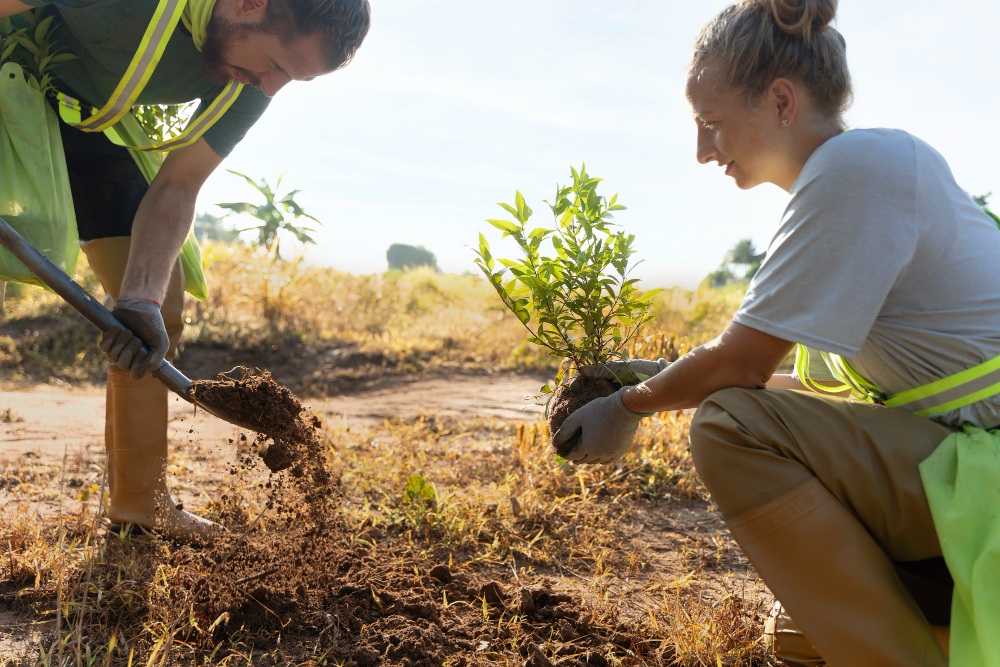Proper landscaping around a septic system is crucial for maintaining a healthy one. The right plants and trees can prevent soil erosion and manage excess moisture, while the wrong ones can cause costly damage. This article explores the best plants and trees safe for septic system areas, ensuring your septic services remain efficient and trouble-free.
Understanding the Risks
Septic systems are delicate, underground structures that treat household wastewater. Planting the wrong vegetation near your septic system can lead to root intrusion, which can clog and damage the system. The key is to choose plants with shallow, non-invasive root systems that won’t interfere with the septic tank and drain field.
Safe Plants for Septic System Areas
- Grasses and Groundcovers
Grasses are an excellent choice for septic system areas due to their shallow root systems and ability to prevent soil erosion. Consider these varieties:- Kentucky Bluegrass
- Fescue
- Bermuda Grass
- Groundcovers also provide a low-maintenance solution. Opt for:
- Creeping Thyme
- Periwinkle (Vinca minor)
- Creeping Jenny (Lysimachia nummularia)
- Herbaceous Plants
Herbaceous plants are non-woody plants that die back at the end of the growing season. They are generally safe for septic systems and add aesthetic value to your landscape:- Daylilies (Hemerocallis spp.)
- Hostas
- Coral Bells (Heuchera spp.)
- Small Shrubs
Shrubs with shallow root systems can be used, but they should be planted at least 10 feet away from the septic system:- Boxwood (Buxus spp.)
- Azalea (Rhododendron spp.)
- Heather (Calluna vulgaris)

Trees Safe for Septic System Areas
While it’s generally advised to avoid planting trees near septic systems, certain species with less aggressive roots can be considered if planted at a safe distance (at least 20-30 feet away from the system):
- Dogwood (Cornus spp.)
- Japanese Maple (Acer palmatum)
- Redbud (Cercis canadensis)
Planting Tips for Septic System Areas
- Distance is Key: Always plant vegetation safely from your septic tank and drain field. Trees should be at least 20-30 feet away, while shrubs should be 10 feet away.
- Shallow Roots: Choose plants with shallow, fibrous root systems that won’t seek out the moisture and nutrients in the septic system.
- Maintenance: Monitor your plants’ and trees’ growth regularly. Trim and prune them to prevent root overgrowth and potential damage.
- Consult Professionals: If in doubt, consult with septic services professionals or landscape experts who can guide you on the best practices for your situation.
Avoiding Potential Issues
To protect your septic system, avoid planting the following near your septic system:
- Willows (Salix spp.): Their aggressive roots seek out water sources.
- Poplars (Populus spp.): Known for their invasive root systems.
- Large, Fast-Growing Trees: Species like silver maple and birch should be kept far away from septic systems.
Conclusion
Choosing the right plants and trees for septic system areas is essential to avoid damage and maintain the efficiency of your septic services. By selecting non-invasive, shallow-rooted plants and maintaining a safe distance, you can create a beautiful landscape that complements and protects your septic system. Don’t hesitate to contact local septic services experts for specific recommendations and professional advice.
